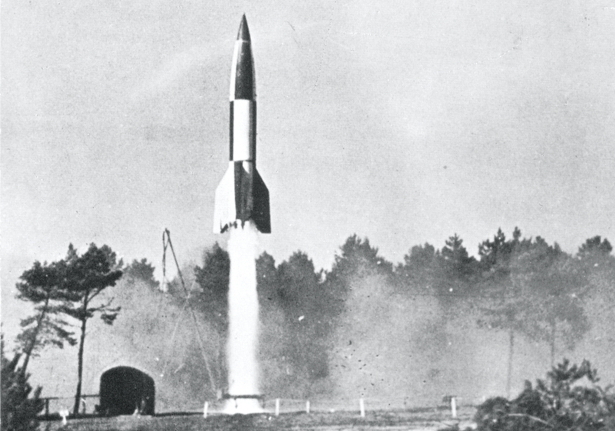The V-2, short for Vergeltungswaffe-2 and also known as the A-4, was the world’s first ballistic missile and was created by the Nazi military during World War II and has inspired many generations of replicas still in production today.
The rocket was designed for sub-orbital space flight, therefore launched from earth and upon reaching an altitude of around 80km (50mi) fell back to earth exploding upon impact. The V-2 programme is suggested to have been the single most expensive development project of the Third Reich. It claimed the lives of 20,000 inmates of the labour camp Mittelbau-Dora, who died constructing over 6,000 replicas of the device and is thought to be the only weapon system of its kind to have caused more deaths during its production than the actual usage.
The first successful launch occurred in early October 1942 but wasn’t fully employed in the war effort until September 1944 where it was used to first bomb Paris, and two days later London. During its reign of limited service by the Nazis, over 3,000 clones were launched resulting in the deaths of 7,250 civilians and military personnel. London received the second highest number of attacks (Antwerp being the most common target) killing 2,752 civilians, statistically two people per V-2 rocket.
However, while in the beginning many were misdirected and exploded harmlessly, improvements in accuracy increased greatly during its development, resulting in missiles claiming hundreds of lives at a time. Anti-aircraft and gunfire were no match for the V-2’s speed and trajectory, dropping at four times the speed of sound. It is suggested that had the deployment of the V-2 rocket happened a few years earlier, Hitler could have won the war.
After the war ended, and in the escalation of the Cold War, the US and USSR began to retrieve as many V-2 rockets and staff as possible. In fact Dr Walter Dornberger the leader of Germany’s V-2 rocket programme, was enlisted by the US Air Force to develop guided missiles.

